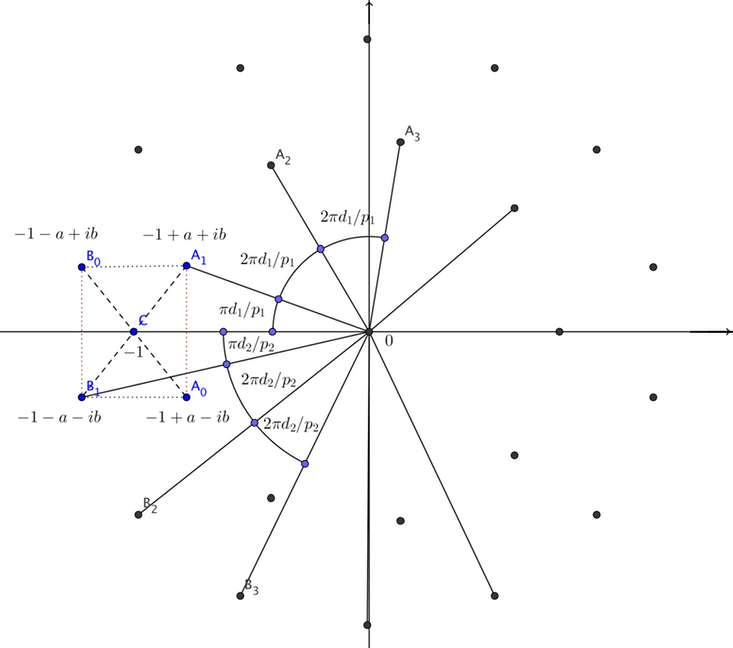A family of counterexamples is defined as follows:
$r=2$,
$p_1\ge 2, \quad p_2\ge 3, \quad d_1 \perp p_1, \quad d_2 \perp p_2$,
$a=\dfrac{\tan(\pi d_1/p_1)-\tan(\pi d_2/p_2)}{\tan(\pi d_1/p_1)+\tan(\pi d_2/p_2)} \qquad b=\dfrac{2\tan(\pi d_1/p_1)\tan(\pi d_2/p_2)}{\tan(\pi d_1/p_1)+\tan(\pi d_2/p_2)}$,
(with $a=1, \;b=2\tan(\pi d_2/p_2)\;$ if $\;p_1=2$)
$g(X)=(X-(a+i b)^2)(X-(a-ib)^2)=X^2-2(a^2-b^2)X+(a^2+b^2)^2$,
$p=\text{lcm}(p_1, p_2), \quad q=2$,
$\prod_{j=0}^{p} f(\omega^j X)=(X^{p}-(a-1+ib)^{p})^2(X^{p}-(-a-1+ib)^{p})^2$.
Here is a picture of the four roots of $f$ in the complex plane:
 $f$ " />
$f$ " />
Here is a picture of the four roots of $f$ in the complex plane:

When $p_1\!=\!p_2$, $\;g$ is a square and the formulas simplify to the original answer:
$r\!=\!2, \; p\!\ge\!3, \; b\!=\!\tan(\frac{\pi}{p}), \; g(X)\!=\!X\!+b^2, \; q\!=\!2,\; \prod\limits_j f(\omega^j X)\!=\!\big(X^p\!-(-1\!+ib)^p\big)^2$.
When $\;a=\pm b\;$ the example simplifies to: $\; r=4, \; g=X+4a^4, \quad$ but the only such cases I know of are for $\;(d_1, p_1, d_2, p_2) \!=\! (3, 8, 1, 8)\;$ and $\;\prod f(\omega^j X)=(X^8-(\frac{1+i}{\sqrt{2}}-1)^8)^2(X^8-(\frac{-1+i}{\sqrt{2}}-1)^8)^2$,$\;\;$ or $(d_1, p_1, d_2, p_2) \!=\! (1, 6, 1, 12)\;$ and $\;\prod f(\omega^j X)=(X^{12}-(\frac{-1+i}{1+\sqrt{3}}-1)^{12})^2(X^{12}-(\frac{1+i}{1+\sqrt{3}}-1)^{12})^2\;$.
Ignoring trivial derivations (i.e. replacing $g$ with products of the "primitive" ones above), I'd be very surprised if any other examples esisted - but a proof of that looks to me extremely hard.
